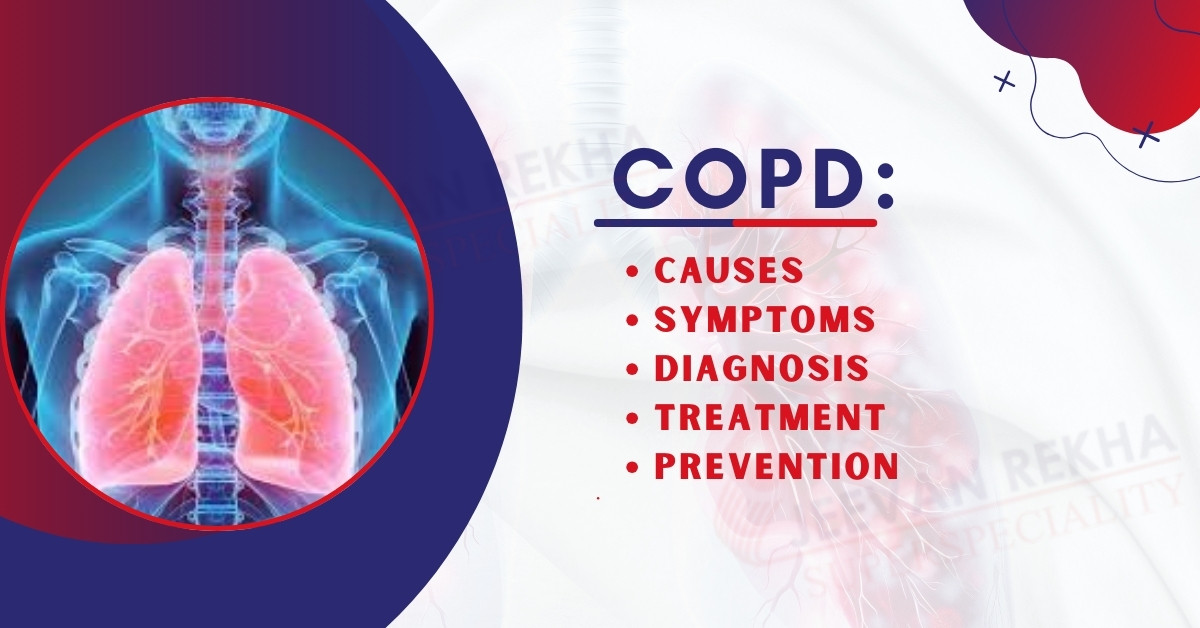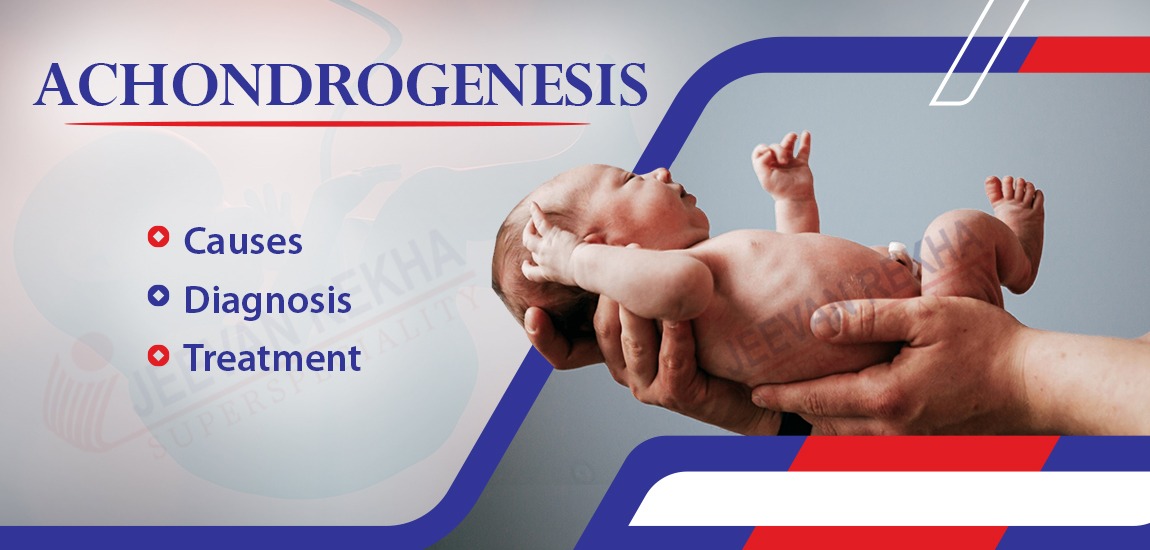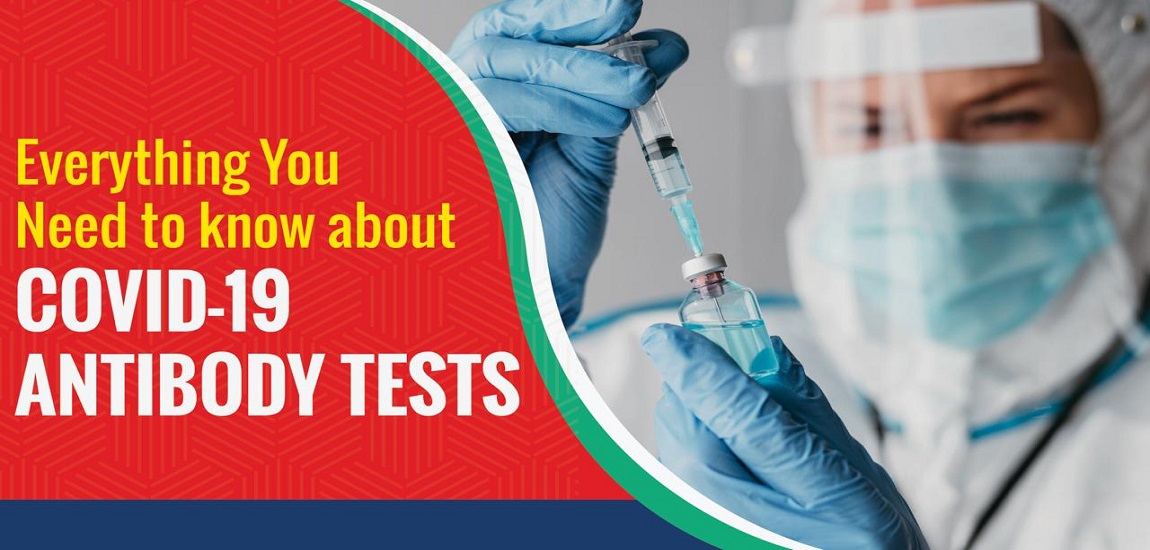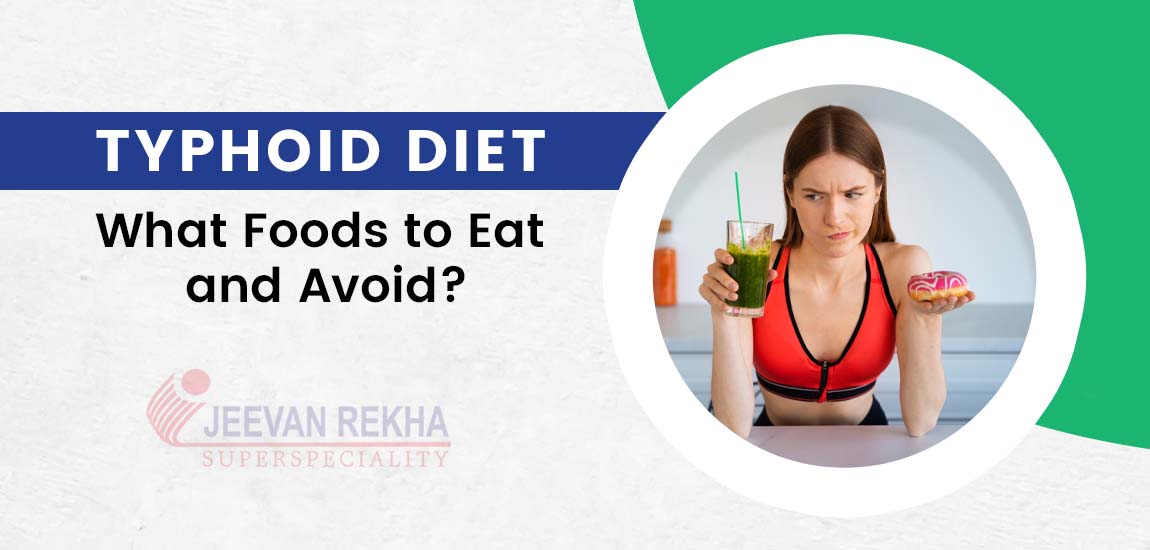
- By jrsh admin
- In Health and Tips,
- Posted September 17, 2024
COPD: Causes, Symptoms, Diagnosis, Treatment & Prevention
What is chronic obstructive pulmonary disease (COPD)?
Chronic Obstructive Pulmonary Disease (COPD) is a progressive and often debilitating respiratory condition characterized by persistent inflammation and obstruction of the airways, which leads to breathing difficulties.
It encompasses primarily two conditions: chronic bronchitis, which involves long-term inflammation of the bronchial tubes, and emphysema, which is marked by the destruction of the alveoli (air sacs) in the lungs. COPD is commonly caused by prolonged exposure to harmful substances, including cigarette smoke, air pollution, and occupational dust.
The condition is marked by symptoms such as chronic cough, sputum production, and breathlessness, and it gradually worsens over time, impacting a person’s quality of life and ability to perform daily activities.
Types of COPD
Chronic Obstructive Pulmonary Disease (COPD) primarily includes two main types:
1.Chronic Bronchitis: This type is characterized by long-term inflammation and narrowing of the bronchial tubes, which leads to excessive mucus production and a persistent cough. The inflammation causes the lining of the airways to swell, resulting in a chronic productive cough and difficulty breathing.
2. Emphysema: In emphysema, the air sacs (alveoli) in the lungs are damaged and destroyed, which reduces the surface area available for gas exchange. This damage impairs the lungs' ability to expel air, leading to breathlessness and decreased oxygen intake. Emphysema is often associated with long-term smoking and exposure to environmental pollutants.
What are the symptoms of COPD?
The symptoms of Chronic Obstructive Pulmonary Disease (COPD) can vary in severity and often worsen over time. Common symptoms include:
- Chronic Cough: A persistent cough that may produce mucus (sputum), which can be clear, white, yellow, or green.
- Shortness of Breath: Difficulty breathing, especially during physical activities, which may progress to even at rest as the disease advances.
- Wheezing: A high-pitched whistling sound during breathing, especially noticeable when exhaling.
- Chest Tightness: A feeling of constriction or tightness in the chest.
- Increased Mucus Production: Excessive production of mucus or phlegm that can be difficult to clear.
- Fatigue: Feeling unusually tired or fatigued, often due to the increased effort required to breathe.
- Frequent Respiratory Infections: Individuals with COPD may experience more frequent colds, flu, or pneumonia.
What Causes COPD?
Chronic Obstructive Pulmonary Disease (COPD) is primarily caused by long-term exposure to harmful substances that damage the lungs and airways. The main causes include:
- Cigarette Smoking: The leading cause of COPD, smoking introduces toxic chemicals into the lungs, leading to inflammation, mucus production, and damage to the airways and alveoli.
- Exposure to Air Pollution: Long-term exposure to outdoor air pollutants, such as vehicle emissions and industrial fumes, can contribute to the development and progression of COPD.
- Occupational Dust and Chemicals: Jobs that involve exposure to dust, fumes, or chemicals (such as in construction, mining, or agriculture) can increase the risk of COPD.
- Genetic Factors: A rare genetic disorder called Alpha-1 Antitrypsin Deficiency can increase the risk of developing COPD, as this condition impairs the body’s ability to protect the lungs from damage.
- History of Respiratory Infections: Severe or frequent respiratory infections during childhood can contribute to lung damage and increase the risk of COPD later in life.
- Secondhand Smoke: Exposure to secondhand smoke from cigarettes can also contribute to the development of COPD in non-smokers.
What are the complications of COPD?
Chronic Obstructive Pulmonary Disease (COPD) can lead to several complications, some of which can significantly impact overall health and quality of life. Key complications include:
- Respiratory Infections: People with COPD are at higher risk for respiratory infections like pneumonia and bronchitis, which can exacerbate symptoms and lead to severe illness.
- Heart Problems: COPD can strain the heart, potentially leading to heart failure or cor pulmonale (right-sided heart failure due to lung disease). The increased pressure in the lungs can force the heart to work harder, potentially leading to complications.
- Pulmonary Hypertension: This condition involves elevated blood pressure in the pulmonary arteries, which can contribute to heart problems and worsen breathing difficulties.
- Osteoporosis: Long-term use of corticosteroids, a common treatment for COPD, can weaken bones, increasing the risk of fractures.
- Depression and Anxiety: Chronic illness, difficulty breathing, and limitations in daily activities can lead to mental health issues such as depression and anxiety.
- Weight Loss and Malnutrition: Increased effort to breathe can burn more calories, potentially leading to unintended weight loss and nutritional deficiencies.
- Sleep Disturbances: COPD can cause sleep problems, including sleep apnea or poor-quality sleep due to breathing difficulties.
How is chronic obstructive pulmonary disease (COPD) diagnosed?
Diagnosing Chronic Obstructive Pulmonary Disease (COPD) typically involves a combination of clinical evaluation, medical history, and specific tests. The process usually includes:
- Medical History and Symptoms Review: The physician will discuss the patient’s symptoms, such as chronic cough, shortness of breath, and mucus production. They will also review the patient’s smoking history and exposure to environmental or occupational pollutants.
- Physical Examination: The doctor will perform a physical exam, often listening to the lungs with a stethoscope to check for abnormal sounds like wheezing or decreased breath sounds.
- Spirometry: This is a key diagnostic test where the patient breathes into a device called a spirometer. It measures the amount and speed of air the patient can exhale. A reduced airflow, especially after taking medication, helps confirm the presence of COPD and assess its severity.
- Chest X-ray: An X-ray can help rule out other conditions and provide visual information about the lungs and heart. It can show signs of emphysema or other lung abnormalities.
- CT Scan: A more detailed imaging test that provides cross-sectional images of the lungs, helping to assess the extent of damage and differentiate COPD from other lung diseases.
- Arterial Blood Gas (ABG) Test: This test measures the levels of oxygen and carbon dioxide in the blood to assess how well the lungs are functioning in terms of gas exchange.
- Alpha-1 Antitrypsin Test: In cases where a genetic predisposition is suspected, this blood test checks for deficiency in alpha-1 antitrypsin, a protein that protects the lungs.
Treatment of chronic obstructive pulmonary disease (COPD)
The treatment of Chronic Obstructive Pulmonary Disease (COPD) focuses on managing symptoms, improving quality of life, and slowing disease progression. Key aspects of COPD treatment include:
1. Medications:
- Bronchodilators: These medications help to relax and open the airways. They can be either short-acting for quick relief or long-acting for sustained management.
- Inhaled Corticosteroids: These medications reduce inflammation in the airways and are often used for more severe COPD or when frequent exacerbations occur.
- Combination Inhalers: These combine bronchodilators and corticosteroids to manage symptoms more effectively.
- Phosphodiesterase-4 Inhibitors: These can help reduce inflammation and relax the airways in certain cases.
2. Oxygen Therapy: For individuals with severe COPD and low blood oxygen levels, supplemental oxygen can enhance oxygen levels and assist with breathing.
3. Pulmonary Rehabilitation: This program combines physical exercise, education, and counseling to improve physical endurance, manage symptoms, and enhance quality of life.
4. Lifestyle Changes:
- Smoking Cessation: Quitting smoking is the most crucial step in managing COPD and can significantly slow disease progression.
- Avoiding Triggers: Reducing exposure to air pollutants, dust, and other irritants helps manage symptoms and prevent exacerbations.
- Healthy Diet: Proper nutrition supports overall health and can help manage weight and energy levels.
5. Vaccinations: Getting vaccinated against influenza and pneumococcal pneumonia can help prevent infections that might exacerbate COPD.
6. Surgery: In some cases, surgical options like lung volume reduction surgery or lung transplantation may be considered, particularly for patients with severe COPD who do not respond to other treatments.
7. Management of Exacerbations: Immediate treatment with antibiotics or oral corticosteroids may be needed during acute exacerbations to manage flare-ups and prevent complications.
8. Breathing Techniques: Techniques such as pursed-lip breathing and diaphragmatic breathing can help improve airflow and make breathing easier.
Tags
Blog Search
Latest Posts
-
बर्ड फ्लू के लक्षण, कारण, उपचार और बचाव के उपाय जानें
December 04, 2025 -
Best Diet Plan for Menopause Weight Management
November 25, 2025 -
Pulmonary Fibrosis Treatment: Understanding Lung Scarring and Breathing Problems
November 21, 2025 -
Arrhythmia: Types, Causes, Symptoms, and Treatment
November 07, 2025 -
Silent Heart Attack: Causes, Symptoms and Treatment
October 24, 2025




